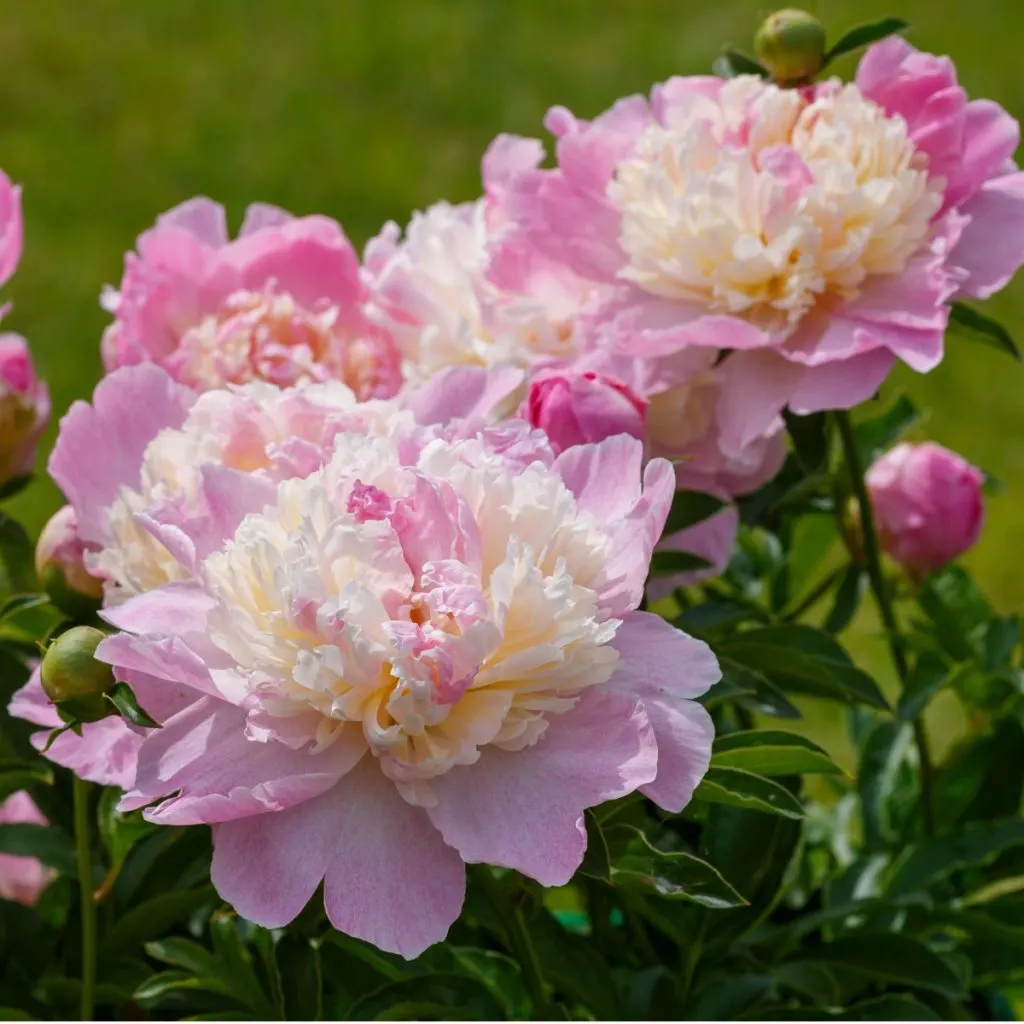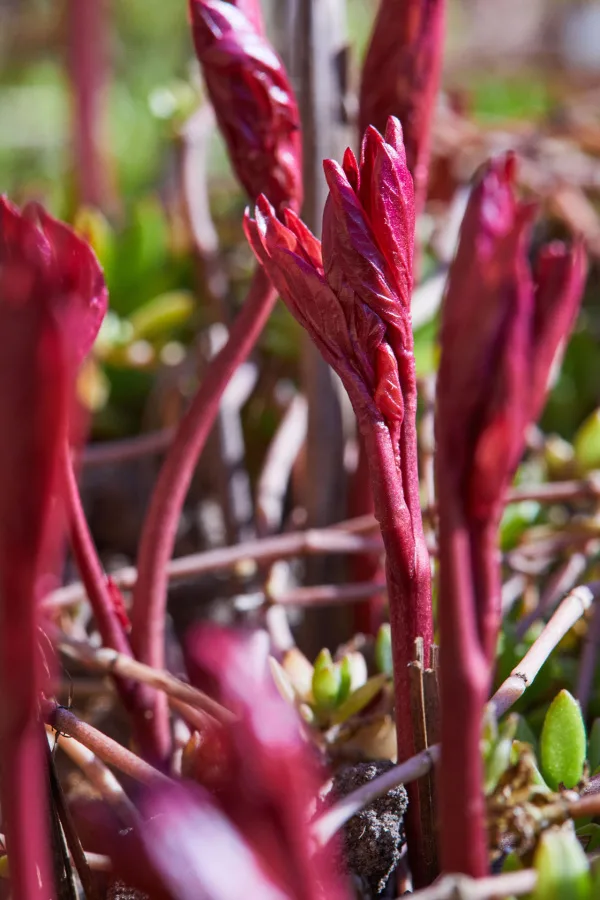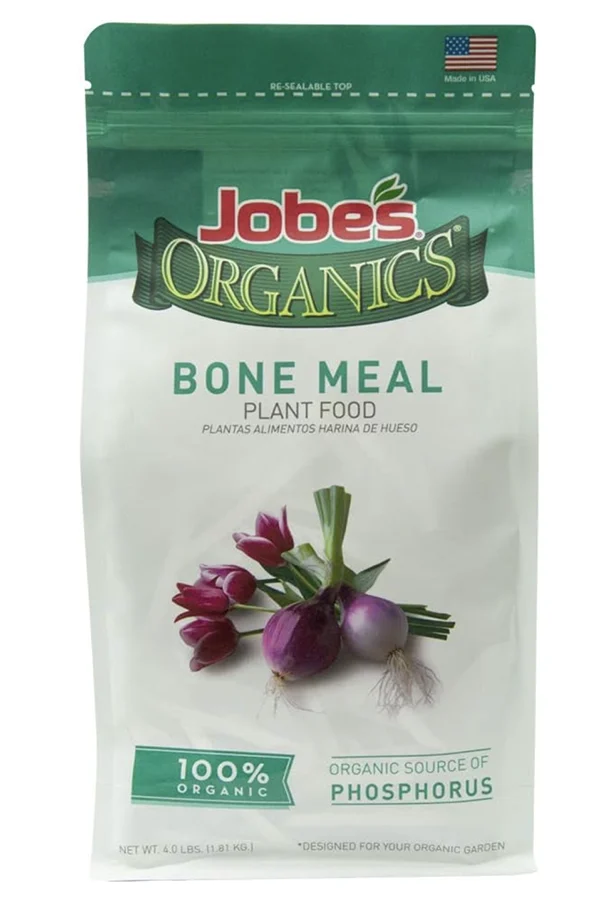Looking for the secret to fertilizing your peonies for bigger and better flowers than ever?
Peonies are known for being some of the earliest flowers to brighten up gardens after winter fades. Their blooms can appear anywhere from early April to mid-June, depending on the local climate. But to flower with gusto – they need power – and they need it right from the start!
That is exactly why the best time to feed your peony plants is in late winter or very early in the spring, just before they start waking up for the season. This early feeding helps them store up the energy they’ll need to produce strong, healthy foliage – and even better – big, colorful blooms when spring arrives!

Unfortunately, if peonies are fertilized after they come out in the spring – the energy still helps the plant – but not when it comes to this year’s blooms. It is just too late for those nutrients to aid in powering more buds – or filling out blooms.
Of course, how and what you use to fertilize matters greatly as well. So with all of those factors in mind – here is a look at how to power up your peonies for big success this year!
The Secret To Fertilizing Peonies
It’s actually best to fertilize peonies twice – once before they ever come out – and again when they just finish blooming. The first is the biggest of course for helping to promote better blooming. The second dose after they bloom is all about helping the plant recover, and then build and store power for winter.
Peonies usually bloom sometime between early and mid-spring, but this timing can vary based on your climate and the type of peony. In colder regions with long winters, peonies may bloom later, sometimes toward the end of spring or even in early summer.
The key to getting beautiful blooms is how the peonies start growing in spring. Peony plants, especially herbaceous varieties, die back completely at the end of their growing season. When spring begins, they send up fresh stems and leaves from underground.

These new stems are crucial because they carry the flower buds for the season. And to grow strong stems and produce plenty of blooms, the plant needs energy right from the start.
Helping Peonies Grow Strong – When & How To Fertilize For Bigger Blooms
To encourage a large flower set, peonies need nutrients before they start sprouting. The best time to feed them is in late winter or very early spring, before any new growth appears. Feeding them early allows the plant’s roots to absorb nutrients in time to support more buds and blooms during the growing season.
It’s best to fertilize your peonies about three to four weeks before they emerge from the ground. This timing gives the nutrients enough time to soak into the soil and reach the plant’s crown and roots, providing the power they need to create big, colorful flowers.
So what’s the best fertilizer to use for peonies? As it turns out – it’s bone meal!
How Much Bone Meal Do Peonies Need?
Bone meal is a natural fertilizer that helps peonies grow strong roots and produce more blooms. It’s rich in phosphorus, which supports deep root growth. It also is loaded with calcium, which strengthens plant cells.

Phosphorus from bone meal also boosts flower production, leading to bigger, longer-lasting blooms. To use, simply mix the bone meal into the soil around the base of the plant. It’s an easy, organic way to keep your peonies powered for flowering year after year.
To give your peonies a strong start, apply about ¾ to 1 cup of bone meal per plant in late winter. After spreading the bone meal, water it in well. This helps the roots begin absorbing nutrients quickly.
Feeding Peonies After They Bloom
In addition to fertilizing before spring, it’s also helpful to give your peonies a second feeding after their flowers fade. This extra boost helps the plant recover from blooming and store energy for next year.
For this post-bloom feeding, apply about ½ cup of bone meal per plant. This lighter feeding strengthens the leaves and roots through summer. More importantly, it helps the plant prepare for even bigger blooms the following spring.
With the second dose, timing is very critical. Always make sure to apply the second round of bone meal as soon as the plants stop flowering. Avoid fertilizing in late summer or fall. Feeding too late in the season will cause new growth at the wrong time, wasting the plant’s energy instead of helping it store power for the next year.

Late Season Care – Preparing For Winter
When fall arrives and your peonies begin to die back, it’s time to cut them back to the ground. This is an important step to get them into full dormancy. Use garden shears to trim the stems, leaving about an inch of stem above the soil.
Cutting back the plant before winter has two big benefits. First, it helps the plant store all its energy in the roots for next year. Secondly, it also prevents pests from hiding in the old leaves and causing problems in your flower beds next spring. For tips on how to care for your peonies after they bloom, be sure to check out: Caring For Peonies After They Bloom – What To Do With Peonies In The Summer!
If your peonies are overly large, fall is also the best time to divide them. See our article: How To Divide Peonies In The Fall – And Why It’s The Best Time To Do It!
Here is to getting your peonies fertilized for success early this year – and again after they bloom. And to bigger and better flowering too!
Simple Garden Life
Follow Our Facebook Page For Even More Great Tips! Simple Garden Life Facebook Page
Simple Garden Life is a website dedicated to keeping gardening fun, simple and enjoyable! We publish two new articles each week along with a new garden podcast episode every two weeks. This article may contain affiliate links.
